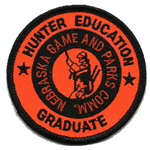Nebraska Game and Parks Commission

Nebraska Game and Parks Commission: Staff Research Publications
Document Type
Article
Date of this Version
2016
Citation
Jorgensen, J.G., and L.R. Dinan. 2016. Whooping Crane (Grus americana) behavior, habitat use and wildlife watching visitation during migratory stopover at two Wildlife Management Areas in Nebraska 2015-2016. Nongame Bird Program of the Nebraska Game and Parks Commission. Lincoln, NE.
Abstract
The Whooping Crane (Grus americana) is one of the rarest bird species in the world (Harrell and Bidwell 2013). Whooping Cranes are listed as endangered by the United States and Canada under their respective Endangered Species Acts (CWS and USFWS 2007) and by the Nebraska Nongame and Endangered Species Conservation Act. Whooping Crane numbers in the Aransas-Wood Buffalo (AWB) flock, the only self-sustaining wild population, were estimated to be as low as 14 adults and 4 juveniles during the winter of 1938-1939 (CWS and USFWS 2007). During the winter of 2014-2015, the estimated size of the AWB flock was 308 individuals (USFWS 2015). Birds in the AWB flock migrate more than 3,500 km twice each year through the Great Plains of North America between their breeding grounds in Wood Buffalo National Park, Canada, and wintering sites in and around Aransas National Wildlife Refuge, Texas. Annually in spring and fall, usually all of the Whooping Cranes in the AWB flock migrate through Nebraska. Many birds in the AWB flock interrupt their migration and stop at sites in Nebraska where they locate nighttime roost sites, rest and feed. Migratory stopover in Nebraska is therefore an important part of their survival, conservation and recovery.


Comments
Copyright Nebraska Game & Parks.